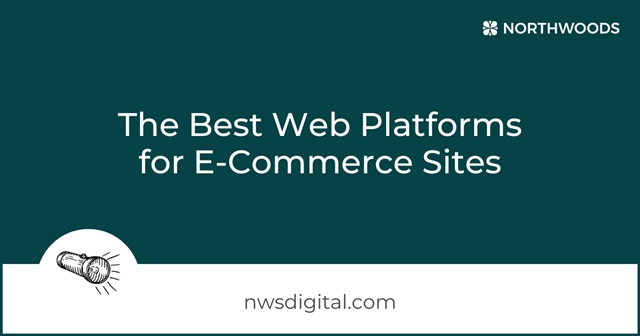By Northwoods Team
December 11, 2023
6 Minute Read
Between 2021 and 2022, e-commerce sales for manufacturers increased by 18.4%. That’s a higher rate of growth than the growth of all manufacturing sales during the same time period.
This shift in the traditional B2B customer funnel is no mere fad. Customers have grown comfortable purchasing direct from manufacturers. That fundamental change means that functional, modern digital storefronts are essential, and not just for established partners and dealers, but also for manufacturers serving new customers directly.
Direct B2C sales have opened an entirely new revenue stream for manufacturers with their own e-commerce sites and apps. Some manufacturers expect e-commerce to account for up to 60% of their total sales over the next several years. A public-facing e-commerce site is rising rapidly from competitive advantage to essential sales platform.
What does that mean for relationships with current dealers and partners? It’s possible – and profitable – to build e-commerce sites that serve both the buying public and established B2B middlemen.
Benefits of E-Commerce for Manufacturers
- Additional revenue stream: The most obvious benefit is the potential impact on manufacturers’ bottom lines. Reaching new B2C customers can open entirely new markets to manufacturers. But simply having a digital storefront is not all there is to grabbing your piece of that 18.4% growth.
- Guide future product investments: With no middlemen involved, your direct sales figures become a key point of data as you consider new product lines. The data can help guide investment decisions about developing direct-to-consumer variants of existing products. It can also drive creation of entirely new product lines, as your data reveals emerging demand in your market. When paired with digital analytics tools, e-commerce platforms offer a great deal of insight into your customers’ needs and wants.
- Search presence: A digital storefront gives your website a larger presence in search engines, which can lead to greater brand awareness and overall reach. The more product listings, product images, and quality, product-related content your site offers, the more likely you are to land in customer Google searches for products in your business sector. That drives more than new site traffic – it drives sales.
How to Handle E-Commerce as a Manufacturer
The best practices of designing a high-quality e-commerce site in general also apply to manufacturers. However, manufacturers do face some specific challenges related to those middlemen.
How to Include Your Dealers in the Transition to E-Commerce
Your e-commerce operation aims first at direct sales to your consumers, but you must consider your dealers and how they will react to your to e-commerce moves.
You may already have a dealer portal, which links your e-commerce sales directly to your dealers. If not, you must consider exactly how customers will make purchases on your website. Dealers and consumers typically have very different navigation needs when they visit your website. Your site navigation must accommodate both. These needs mainly relate to product content and the overall ordering process.
The same site can serve both audiences, but manufacturers with an already running vendor/dealer portal might need to maintain it as a separate website and build another site to handle direct public consumers. Leaving in place the tools familiar to your dealers and creating another, public-facing storefront can be a good short-term strategy, especially if you’ve recently updated your vendor storefront.
This might not be viable long term. For starters, it burdens you with maintenance of two distinct e-commerce sites, which means repeating every update in two locations, and that’s hard.
Instead, try to bring the two audiences together in one master storefront equipped with all the tools either audience might need. Include all the nuts-and-bolts product info your dealers crave. Offer more digestible descriptions and images to direct customers. Most businesses can serve both audiences well from a single e-commerce site.
Choose Your E-Commerce Web Platform Carefully
Choose wisely from the wide range of available e-commerce web platforms as you build your B2C/B2B site. SaaS tools aimed at web novices, such as Wix and Squarespace, are probably not the right fit for manufacturers.
Alternatives such as WooCommerce, BigCommerce, OpenCart, and our own Titan CMS are better fits for starting a consumer-friendly online store. These tools require some technical setup; we recommend seeking an experienced partner to help choose a platform and build your e-commerce site. (Here are some of the best e-commerce web platforms.)
Make Product Info. Digestible
You and your dealers might be intimately familiar with every product in your catalog. The average web user, even an active shopper on a mission, probably isn’t. Some B2C users will arrive at your site with little knowledge of your broader industry and instead land on your site with little more than a problem in hand and vague hope that your products can solve it.
Help them out by breaking your existing product inventory into categories with titles the average user will understand. Avoid industry jargon when naming product groups and categories. If you can simplify the names of the products themselves, great. Anything that helps visitors understand your products on their terms is a bonus.
Use this simplified product inventory to organize your storefront’s page titles, navigation menus, and product search filters in ways that users find easy to understand. This can be a challenging for anyone accustomed to selling only to savvy vendors who know exactly what they’re buying.
But make sure to take up that challenge. Create clear menus with intuitive product groupings that quickly and easily lead B2C customers to what they seek. (They might not admit it, but even the most expert B2B dealer will appreciate the simplicity, too.)
Clear, simple descriptions for each product can help with this. Include photos of the product, both unassembled and in action, if possible. Consider bullet lists of potential uses. Beyond that, add the in-depth product info and specs dealers need. Having both means you’re serving all your audiences with one piece of content.
Set Up or Revisit Your Data Analytics
Web analytics can provide invaluable insight into your customers’ needs -- if the analytics tools are set up correctly. Google Analytics, for example, can shine a bright light into almost every stage of your e-commerce customer funnel, but only with the proper tracking and event triggers in place.
The launch of a new e-commerce site is a great time to establish or revisit your GA setup. That data can help shape future site investments, test content ideas, and guide product development. Without good data, you’re just guessing. It’s better to actually know whether, how, and to what degree your updated site is drawing in potential customers and converting them. And those insights can show you how to further improve site performance.
That’s why it’s so important to find an expert partner who knows the ins and outs of the manufacturing industry and Google Analytics setup. The right partner will know how to use GA to answer every question about how customers use your site.
Ready to get started with e-commerce? Our experts will partner with you to ensure your initiative is a success. Contact us.
Related Blog Posts

With the e-commerce industry anticipated to top $1 trillion in revenue and account for 20% of all U.S. retail sales in 2024, it's critical for e-commerce businesses to build effective, user-friendly websites. Get started with our 10-step guide!

We’ve broken down some of the most popular e-commerce tools by usability, scale, and technical capacity so you can make the best choice for your business.

Position your e-commerce site – and your business – for success with these SEO tips that will help increase traffic, improve search rankings, and boost conversions.